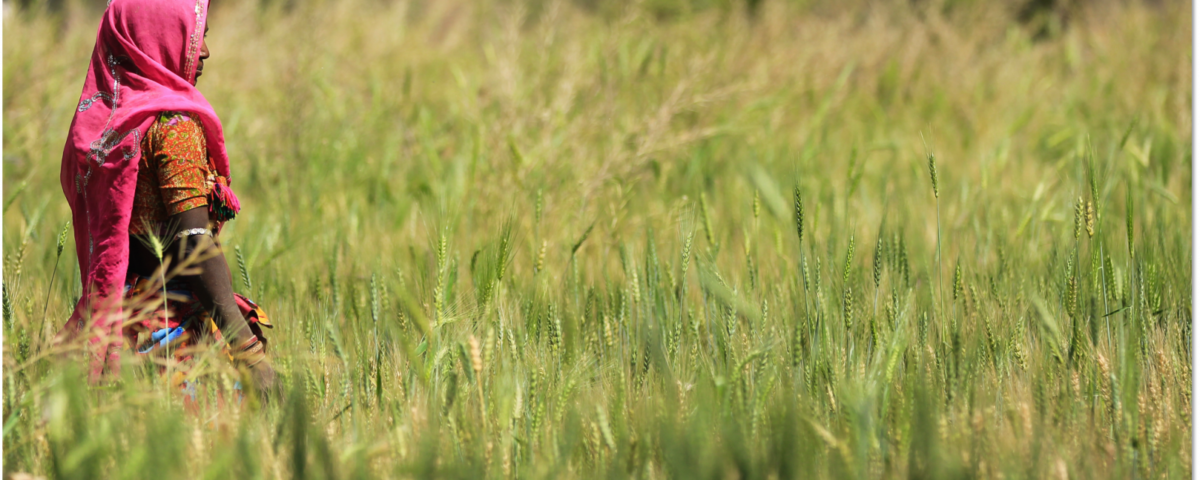Nutrition plays a crucial role in the development of climate-resilient agriculture

Opposition corners centre on MSP guarantee law, Agri Minister Shivraj Chouhan blames Congress for ignoring farmers
August 5, 2024
Bihar seeks investment in maize crop sector amid potential and crop diversification
September 27, 2024Vandana Sharma & Ballabi Manjul, 26 Sep 2024
As the world’s population increases, the demand for food intensifies, pressuring agri-food systems and leading to forest land conversion for agriculture and livestock. By 2050, the world will have to feed around 9 billion people, which will in turn make the production of food quite a challenge. India ranks 7th on the Global Climate Risk Index 2021, with a 1.5°C rise potentially reducing rice yields by 3-15%. It is estimated that given 60% of its cultivated land under climate-sensitive rainfed agriculture, about 84% of all losses arise from drought-related calamities. Due to the convergence of these three factors—food insecurity, malnutrition, and climate change—urgent and all-encompassing policies are required to support agricultural resilience and guarantee that vulnerable communities have access to nourishing food.
Climate Change impact on Food security and Nutrition
Climate change is affecting crops and their yields, reducing the nutritional value of foods, raising the prices of foods, disrupting food chains, and creating vulnerabilities among people. For instance, rising temperatures and erratic precipitation can negatively impact staple crops, resulting in a reduction in the amount of food available. According to a research by the Food and Agriculture Organization (FAO), by 2050, climate change may reduce crop yields worldwide by 10 to 30 percent, which would worsen food insecurity and malnutrition. India is ranked 107 out of 123 countries on the Global Hunger Index, with 14% of its population undernourished. Though India has made progress, the country is still battling high levels of stunting and wasting.. This calls for comprehensive approaches that involve enhancement of agricultural resilience and improvement in nutritional outcomes in response to climate change challenges in India.
Integrating nutritional support in climate smart agriculture
As with food security, nutrition plays a crucial role in the development of climate-resilient agriculture. Therefore, the availability of timely, sufficient, safe, and nutritious food that satisfies everyone’s physical, social, and economic needs can be defined as food security. Climate-Smart Agriculture (CSA) addresses these issues by increasing productivity and reliability of agriculture. Understanding that there is a strong association between nutrition and food security and it is important in order to improve wellbeing and mitigate the effects of climate change. In this sense, it is imperative that agricultural interventions include nutrition. In this sense, the likelihood of being able to adapt more to the effects of climate fluctuations is increased when diversified cropping is performed. For instance, farmers in the state of Maharashtra use an intercropping system which makes a strong claim to increase yield and provide a balanced diet that will aid in meeting the suggested nutrient requirements. To improve food baskets and positively impact the nutritional status of populations that depend on staple commodities, the Indian government has promoted the use of biofortified crops like iron-dense Bajra, Maize, Soybean etc. This is made possible through the promotion of what can be planted and harvested during bad weather through investments. Other follow-up programmes similar to National Innovations in Climate Resilient Agriculture (NICRA) are aimed at propagating awareness, developing climate-proof varieties and ensuring food security of farmers affected by climate change. Bearing the objective to raise the productivity of agriculture, National Mission for Sustainable Agriculture (NMSA) adopted Integrated Farming System, Management of Soil Health, & Efficient Use of Water Resources. In their bid to eradicate nutritional poverty, farmers in Odisha have enhanced crop production through the years due to the NICRA’s improvement in practicing climate wise agriculture. Farmers believed that variety improved their families’ dietary insufficiency and served as a hedge against losses, which lessened the effects of malnutrition. Consequently, the goal of the National Millets Mission is to develop nutrient-dense, drought-resistant millets with the highest possible nutritional content. Sustainable agriculture for climate change, as elucidated in the farmer tales featured in this effort, has resulted in improved health and income for them.
Conclusion
An increased provision of nutritional support in climate resilience agriculture is vital in addressing the compound difficulties that arise from climate change, particularly hunger and malnutrition as concerns in India. Findings also show that government interference has assisted in the achievement of better yields in crops, which assisted in increasing food security, apart from the development of farmers’ incomes. As a result of measures like the National Nutrition Mission, cases of malnutrition have reduced many folds, particularly, among women and children. In addition, several government initiatives provide risk mitigation, market access, and technical assistance to the farmers so that they can adopt suitable climate smart measures including crop rotation, mixed cropping and agroforestry.
_____________________________________________________________________________________________
(The views expressed in the article are personal opinion of Vandana Sharma, Senior Associate, Climate Practice, The Catalyst Group & Ballabi Manjul, Associate, Climate Practice, The Catalyst Group)


